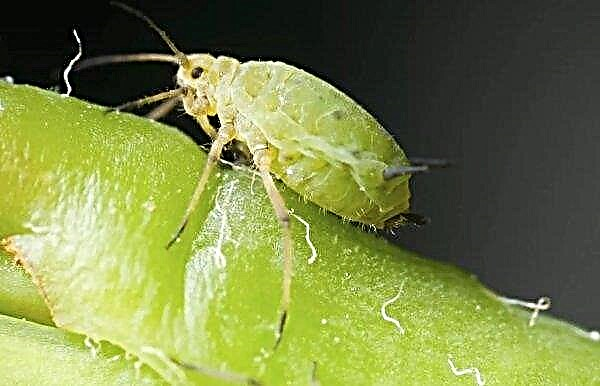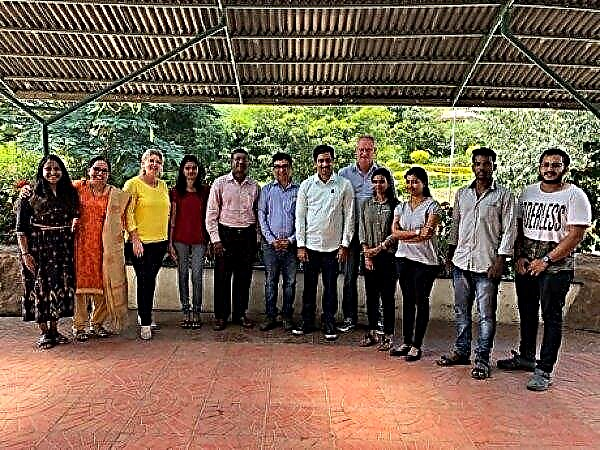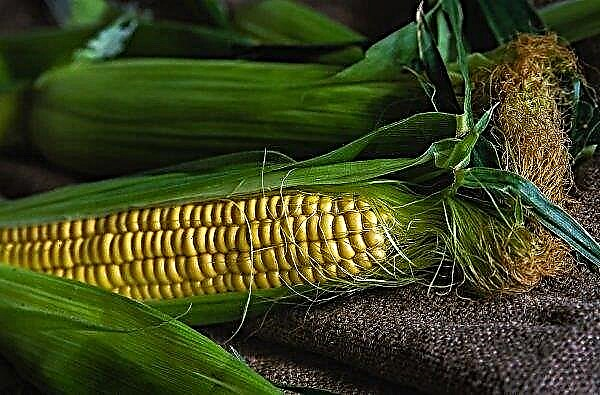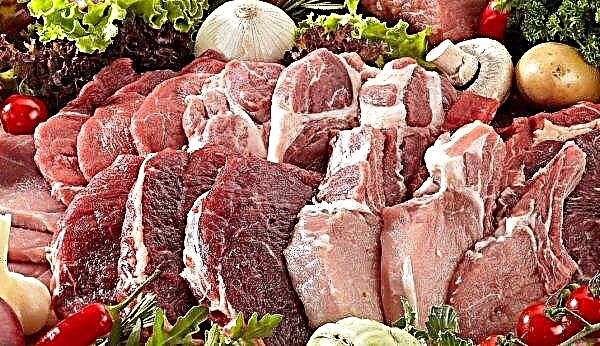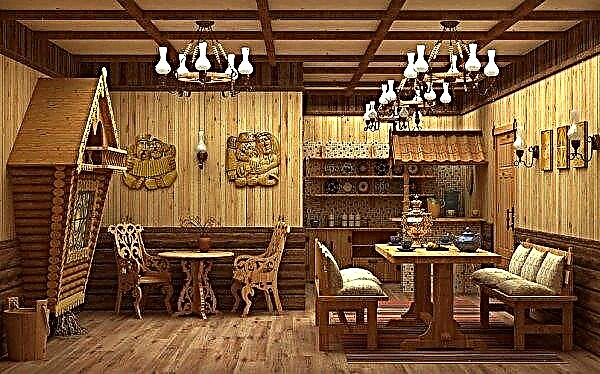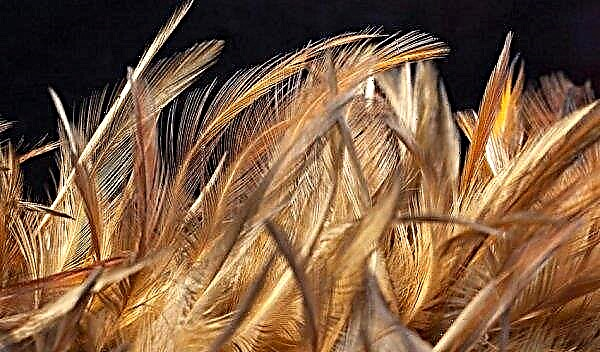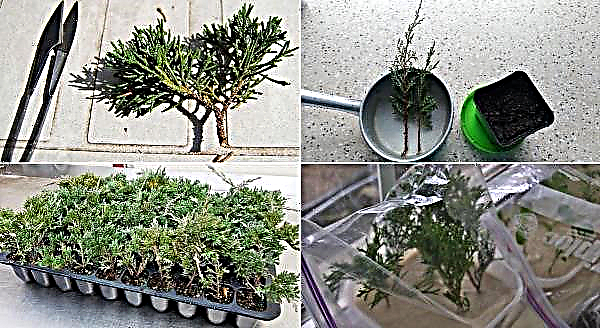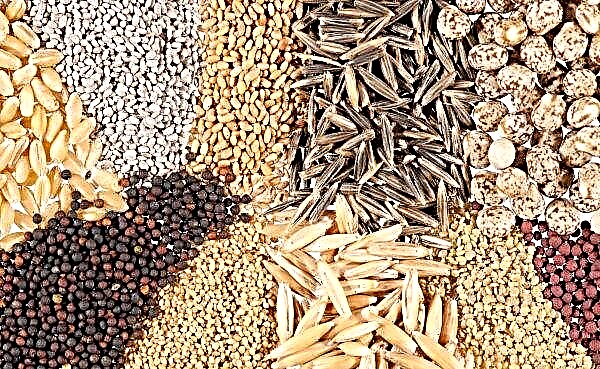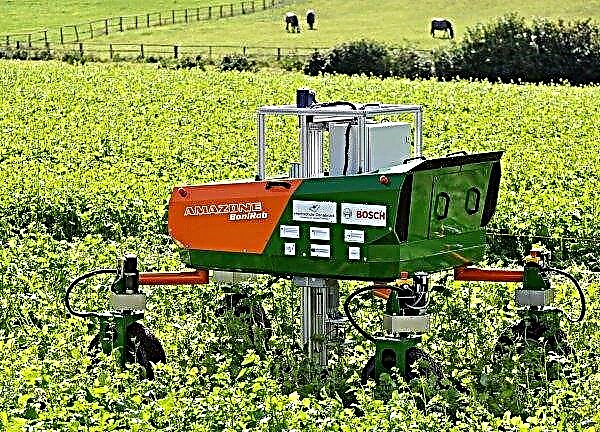Representatives of the mushroom genus Dodges are infrequent, but still known to experienced mushroom pickers. There are several Russian synonyms for the name of this fungus: pluteus or pluteust (from the Latin. Pluteus), which means "shield", and derivatives to whip (to protect) and the cursed (protective). One of the popular varieties of this mushroom genus is the white or webbed whip.
Mushroom description
The webbed whip has many similarities with representatives of a kind: similar external and taste characteristics, as well as distribution sites. Despite this, the species in question can be quite easily distinguished from others due to its special features.
Important! Due to the lack of a ring and a Volvo, the white whip does not have similar poisonous doubles in the kingdom of mushrooms.
What does it look like
The description of the appearance and structure of the white plutea is as follows:
- Hat. In young specimens, this part has a bell or convex-open shape, and the old mushroom becomes flat. The cap size is 40–80 mm. A convex tubercle stands out in the center, and scales are also visible in this place. The color of the young mushroom is shaded white, and the adult is beige-brown.
- Records. Under the hat there are wide plates. At first, they are white in color, and as they mature and spores appear, the plates acquire a pinkish color. The entire leg is covered with rare gray scaly plates.
- Spore powder. Spores have an elongated flat shape. The color of the powder is pink.
- Leg. The slightly curved leg has an elongated cylindrical shape. Closer to the base there is a thickening. The length of this part of the fruiting body is up to 90 mm, and the diameter is up to 10 mm.
- Pulp. In the hat, the pulp is quite thin, prevails in the central near-tuberous part. In the leg - it is brittle with a fibrous structure. In all parts of the fruit body, the flesh is creamy white. At the cut point, the color does not change; there is also no juice. The taste is neutral and has a slightly pronounced smell of radish.
Where is growing
The webbed species of the Plyuteev family can be found in some European and Asian countries, as well as in Siberia, Algeria and Morocco. Although the species in question is considered rare, Russians have the opportunity to collect plutaea in the temperate zone of the European part of the Russian Federation, as well as in the Ural Mountains. The collection of white plutee is carried out in broad-leaved, as well as in beech and linden forests.
Usually, white whip is located on decaying wood, moist stumps, soil saturated with wood substrate. The webbed whip rarely grows like a single mushroom. He usually gathers in groups, which is why he is popularly called "kuchkovaty".
 Harvested during the summer and September. Sometimes these mushrooms are found in areas mulched with sawdust, so the growth of membranous plutea in gardens, lawns and vegetable gardens is also possible.
Harvested during the summer and September. Sometimes these mushrooms are found in areas mulched with sawdust, so the growth of membranous plutea in gardens, lawns and vegetable gardens is also possible.
Edible or not
The fruit body of the fungus in question is considered completely edible, but its taste is of no value. This is due to the fact that the flesh of the white plutea in all parts of his body is neutral (tasteless). Because of this, it is allowed to be used only as an integral part of various dishes.
Important! Young copies should be consumed - in them you can try a light potato flavor. Old mushrooms can acidify, but this is not a dangerous sign, but only affects the nutritional quality of the dish.
Varieties and doubles
Due to its color of color, the webbed has no twins.
Despite this, many experts insist on the similarity of the species in question with some others:
- Trick deer. This congener is larger than white. The surface of his cap has a faint sheen. It grows on rotten wood and moist leaves.

- White-North Dodger. The minimum difference with webbed is the presence of large spores. Such a mushroom can be seen on dead wood of deciduous trees.

- Noble trick. This edible mushroom can grow up to 200 mm. Going to groups. It differs noble from white with its smooth cap, as well as a gray leg with a brownish vein
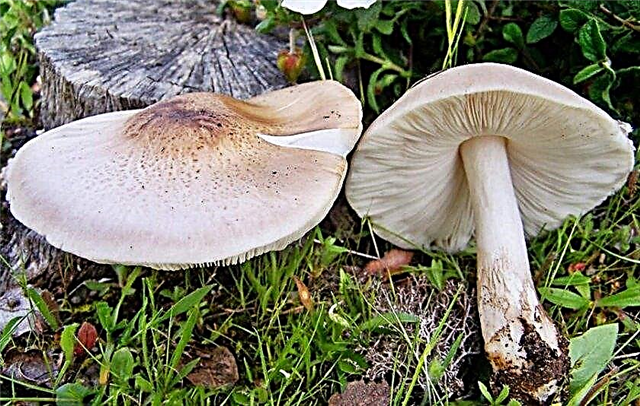
- Hongy Way. This mushroom is most often found in dark color, but there are times when it acquires a white color.
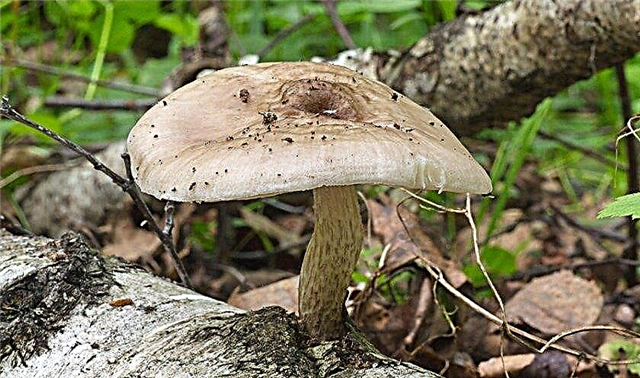
- Wrinkled Orange. This subspecies has a hat more lightened than that of the white species. He also prefers to grow on diseased trees.
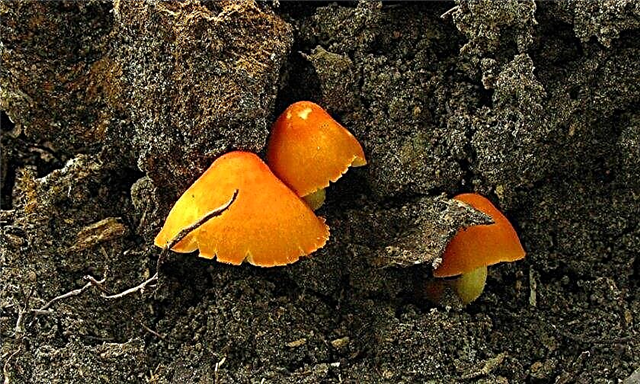
Growing
Due to the fact that species of the Plyuteev family are not widespread in the Russian Federation, people began to grow them at home. The growing procedure is considered the same for the white plutea, and for other species of this genus.
Before planting, it is necessary to prepare the substrate in a different ratio. It is of two types:
- homogeneous (straw, hay, sawdust);
- combined (compound of the above raw materials).
The growing process goes through the following stages:
- The substrate must be filled with boiling water. The base that has cooled down to +20 ... + 30 ° С must be squeezed out of excess moisture and mixed with mycelium (1 pack per 15 kg of base).
- The finished substrate is distributed in plastic bags, which subsequently need to be pressed and tied. Throughout the package you need to evenly make 5-centimeter cuts.
- Mushroom preparations can be both indoors and outdoors in darkened areas. Mushrooms in the first month of germination do not need light.
- After a period of fading, the substrate is cream-colored and compacted.
- After a fortnight, mushroom buds form, at the place of occurrence of which the film should be incised. From this period, planting needs lighting.
 1 - moisturizing and mixing the substrate; 2 - mixing pasteurized substrate with mycelium; 3 - drawing cuts on a bag filled with seeded substrate; 4 - placement of blocks for growing mushrooms on racks with vertical suspension.
1 - moisturizing and mixing the substrate; 2 - mixing pasteurized substrate with mycelium; 3 - drawing cuts on a bag filled with seeded substrate; 4 - placement of blocks for growing mushrooms on racks with vertical suspension.Fruiting occurs periodically every half month, the first periods (1-2) - the most productive.
The second variant of cultivation of the fungus under consideration is growing on hardwood:
- Bars or logs up to 400 mm in length and girth up to 250 mm need to be soaked in water.
- In the sawn places put mycelium.
- The finished base is sealed with duct tape or crushed with hay.
- Overgrowing takes place from 3 months to six months, taking into account the temperature regime (+7 ... + 27 ° C). The wood should be in a darkened place.
 Fruit bodies are harvested 1-2 times in the spring and another 1-2 in the autumn.
Fruit bodies are harvested 1-2 times in the spring and another 1-2 in the autumn.
Mushroom benefits
The considered species of the Plyuteev family, like all its relatives, contains minerals that take part in hematopoiesis and favor the general recovery of the body.This mushroom is also saturated with fatty acids, which is necessary to improve the condition of the nervous system and skin. However, it should be excluded from the diet for pregnant, lactating women, children, people with gastrointestinal diseases or an allergic reaction. 100 g of product contains 19 kcal.
Did you know? Some representatives of the Pluteev family contain psychedelic substances that can trigger hallucinations.
The fruiting body in question has such nutritional value:
- proteins - 1.7 g;
- fats - 0.7 g;
- carbohydrates - 1.5 g.

Cooked white whip retains all the beneficial properties. The structure of the mushroom pulp is watery without an odor. A thermally processed product is a source of proteins that are easily absorbed by the human body.
Cooking Application
As indicated earlier, a webbed or white fungus is a completely edible fungus. Unfortunately, due to the lack of taste features, or rather, its neutrality, it is not considered a delicacy. For cooks, this product can be an ingredient in creating experimental dishes, unusual marinades.
This is due to the fact that such a tasteless mushroom in no way spoils the taste of the dish. This mushroom is used in boiled, fried, pickled, stewed and dried form, which allows us to call it universal.
Medical use
The species under consideration, like some other representatives of the Pluteev family, It is not used in traditional medicine, and is also not a raw material for medical preparations.
Did you know? In summer, in the tundra, mushrooms often grow above trees. This is because the trees living in the harsh northern climate have a height of about 20–25 cm and tend to land, so that mushrooms can rise above them.
Despite this, white whip due to its composition can perform the function of daily balancing of the body, improving immunity. Mushroom soups from it can become a good healing tool in the common cold season.
Mushroom danger
As mentioned above, a webbed webbed does not pose any danger to humans, since it is edible. But the danger may lie not in the fungus itself, but in toxic substances received by it from the environment where the fruiting body grows. Therefore, in order to avoid poisoning, mushrooms should be collected away from the carriageway, settlements, and enterprises.
An excellent way to remove harmful substances is to soak the mushrooms in salted water. Harvested crops should be soaked for about 2 hours. Also, before peeling, it is advisable to peel.
Thus, a white or membranous whip is one of the species of the Twig, which, despite its edibility, has not gained popularity due to lack of taste. Nevertheless, this product will perfectly fulfill the role of raw materials in an experimental kitchen. Not possessing special healing properties, he is still able to strengthen his health.






